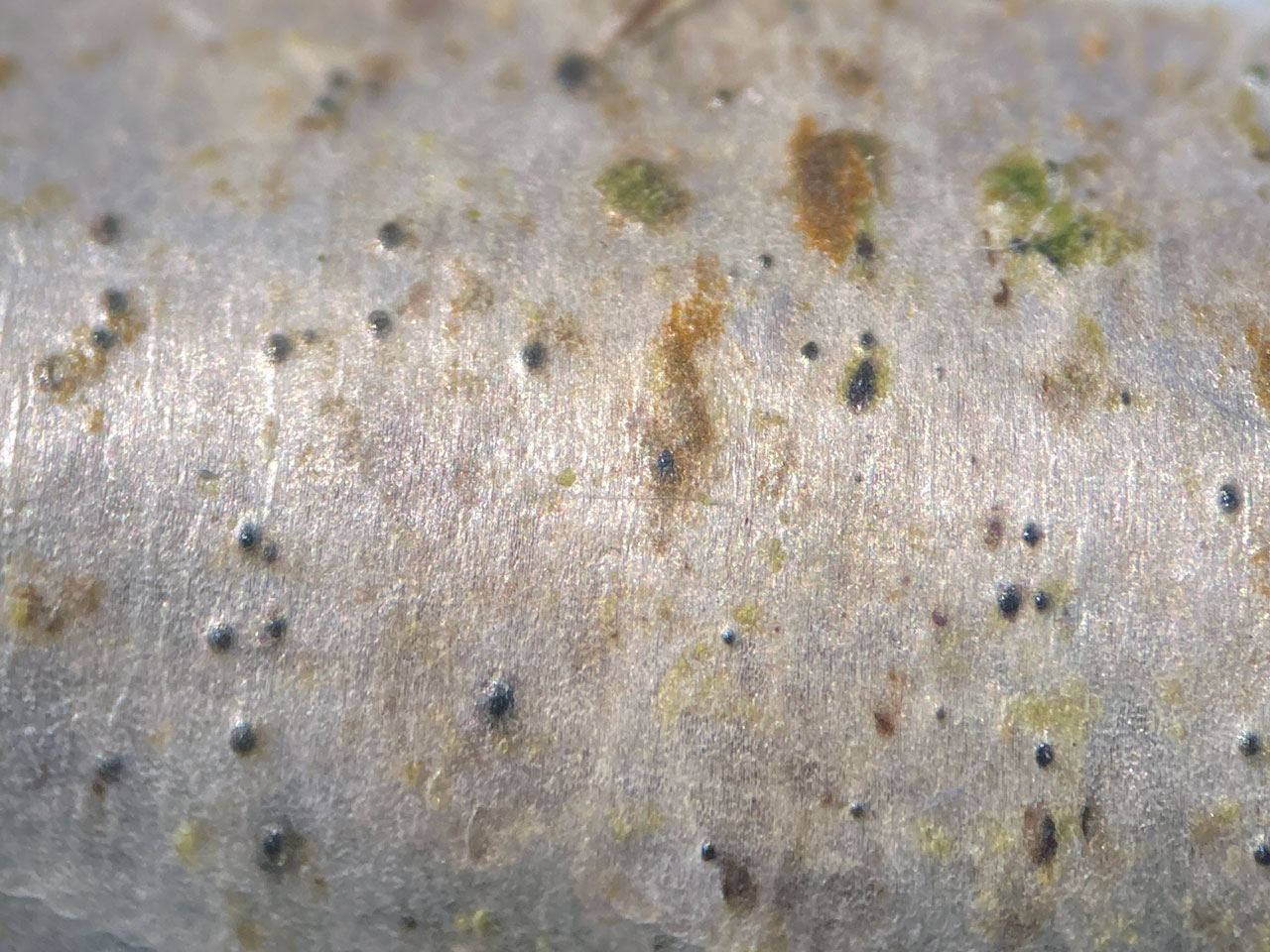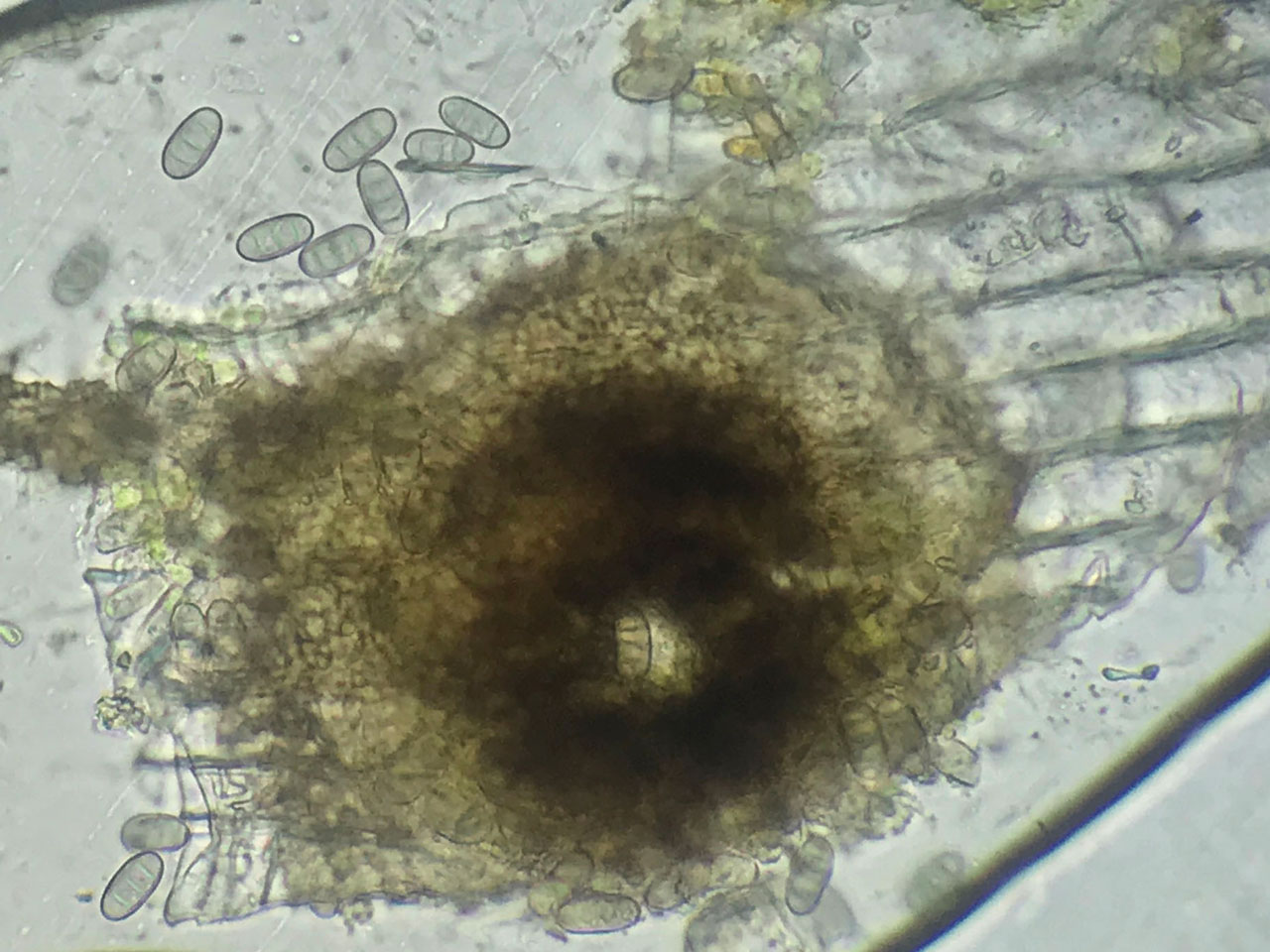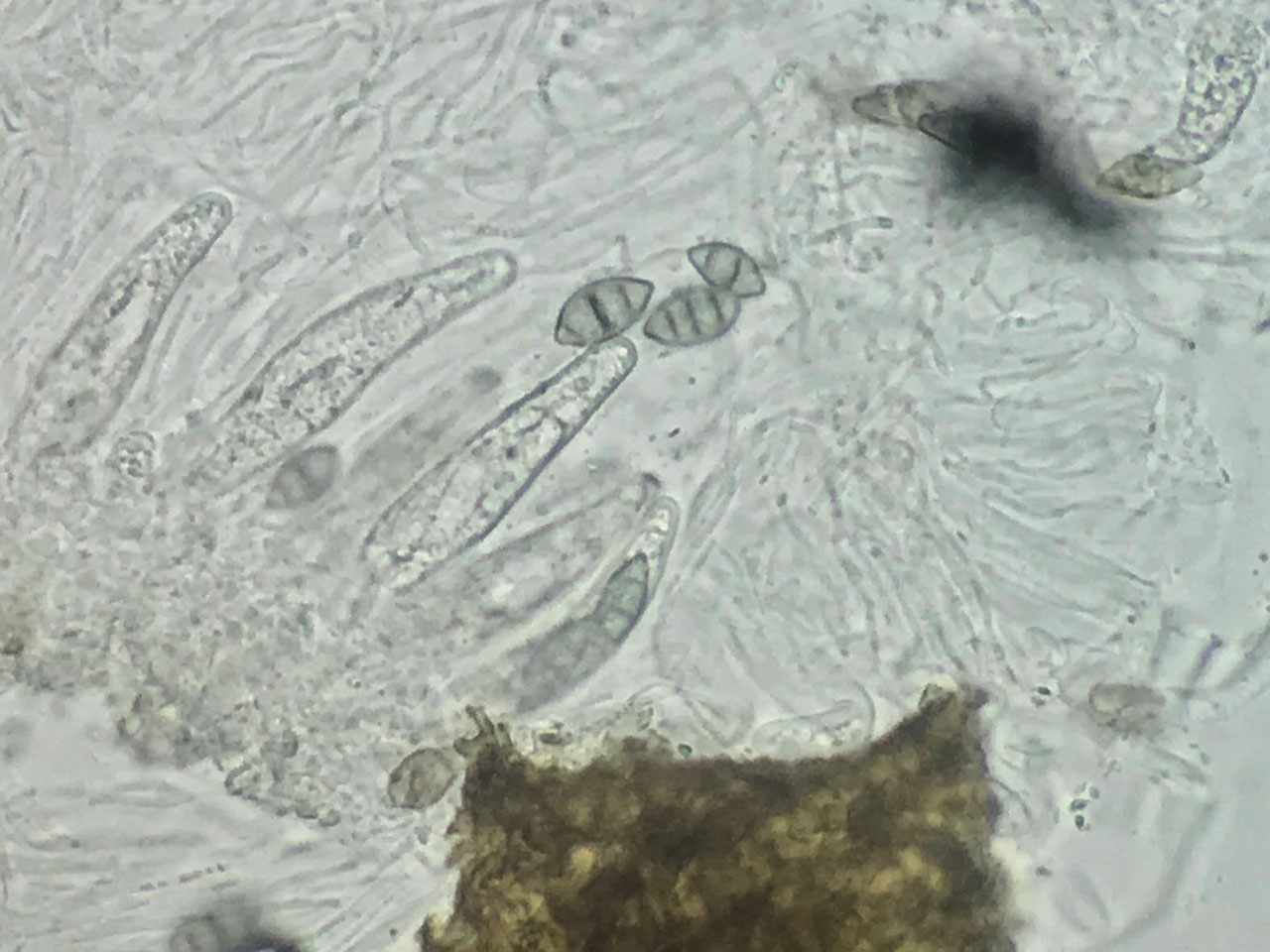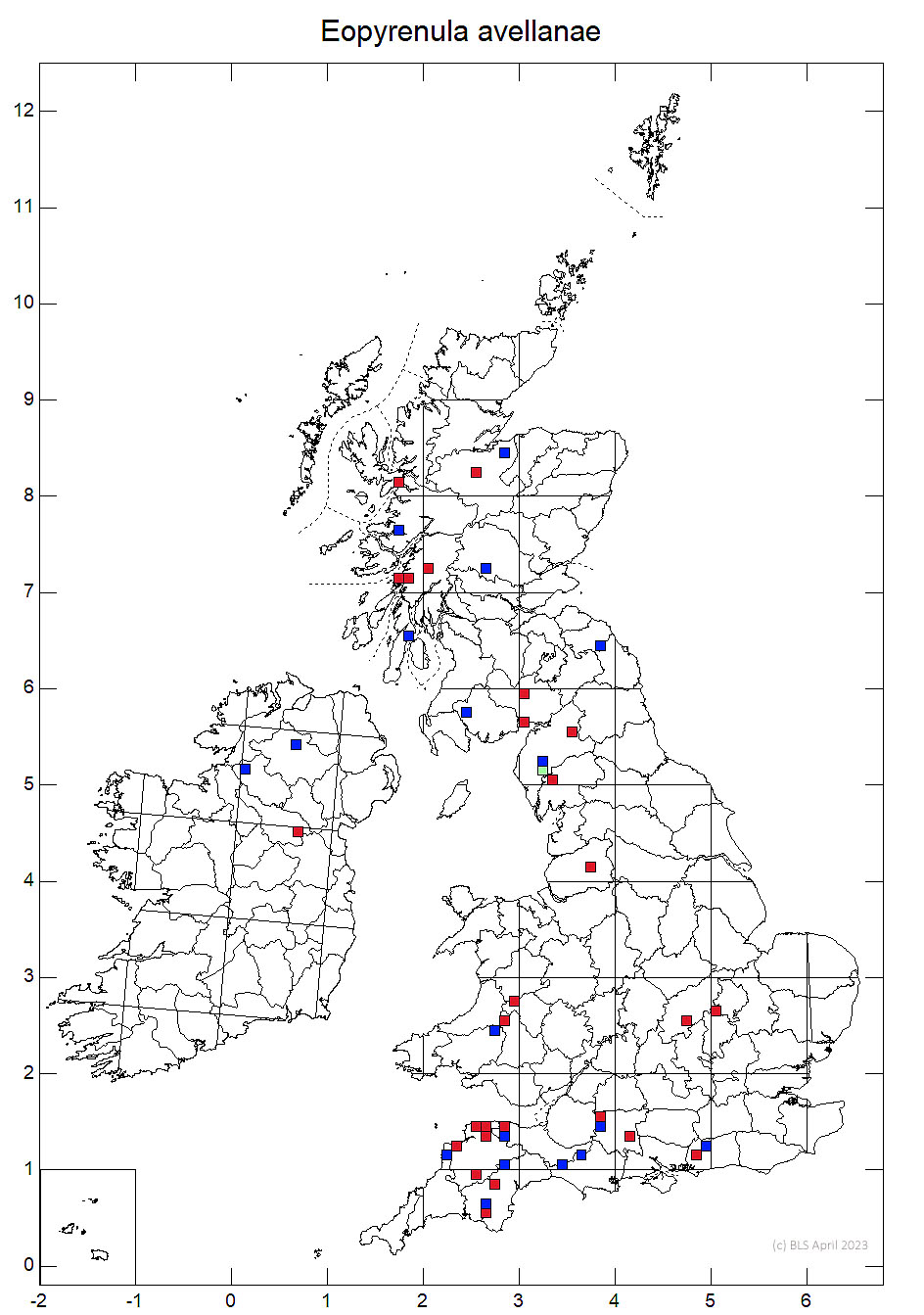Eopyrenula avellanae
A tiny "black dot" found as a pioneer mainly on young Hazel stems on old Hazel bushes in woodland, including abandoned coppices. Generally western, but recently found in eastern England and Scotland so may be spreading. Anisomeridium viridescens looks similar but is easily separated microscopically. Often lacking perithecia, but the pycnidia contain very distinctive 3-septate and brown macroconidia, which are smaller than those of Eopyrenula grandicula.
Thallus inconspicuous, not delimited, scarcely discolouring the bark, Trentepohlia photobiont filaments sometimes present. Perithecia broadly elliptical in outline, 0.2–0.28 × 0.16–0.22 mm, with a distinct ostiolar depression, ± hemispherical in section; true exciple indistinct; involucrellum outwardly spreading. Asci subcylindrical, 55–60 × ca 10 µm, 2- to 8-spored. Ascospores 9.5–16 × (5–) 6–7 µm, ellipsoidal, brown, (1-to) 3-septate; septa pale or mid septum becoming dark, with lenticular lumina. Macroconidia 9.5–13 × (4–) 4.5–6 µm, 3-septate, with rounded locules and pale septa; microconidia 2.8–4 × ca 0.7 µm, colourless, bacilliform.
Easily mistaken in the field for Arthopyrenia s.l. species or Pyrenula coryli; the latter has ascospores with markedly lens-shaped lumina and curved microconidia (macroconidia are not known).
On smooth bark of Hazel in old woodlands; spreading into formerly coppiced woods, but apparently more slowly than Anisomeridium viridescens.

Rare, W. and S.W. Britain (two recent records from the Midlands), N. Ireland. Found much less often than Eopyrenula grandicula.
Probably recovering and spreading with the decline in Hazel coppicing
Britain: Notable & International Responsibility species
Scotland: Priority Taxon for Biodiversity in Scotland
Cannon, P., Coppins, B., Aptroot, A., Sanderson, A. & Simkin, J. (2023). Perithecial genera I, including Acrocordia, Alloarthopyrenia, Anisomeridium, Antennulariella, Arthopyrenia, Celothelium, Cyrtidula, Dichoporis, Eopyrenula, Julella, Leptorhaphis, Leptosillia, Lithothelium, Mycomicrothelia, Mycoporum, Naetrocymbe, Pyrenula, Rhaphidicyrtis, Sarcopyrenia, Swinscowia and Tomasellia. Revisions of British and Irish Lichens 37: 1-59.
Text by Neil A Sanderson based on Cannon et al (2023)



